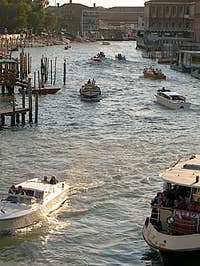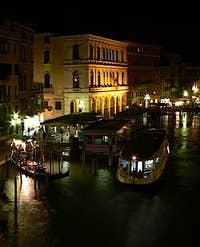Canals and Rii of Venice

The Grand Canal in Venice It is of course all the charm and all the beauty of Venice. Water, mirrors not only our souls but also the palaces. Water not only embellishes, water is the source of life.
All these multicolored images and generally gilded of the canals of Venice undeniably bring a unique visual dimension to the city.
But beyond this romantic and artistic aspect of the canals of Venice are the historical and present day factors.
The entire city is constructed on water, on millions of trunks of trees planted vertically in the soil of the lagoon for over one thousand years in some cases.
And all architecture of the city, its houses and palace, rises directly from this successful taming of the streams.
Streams, yes, not just some water. Because this seemingly beautiful water and which gives back the softened image of the facades, can also be threatening, invading calli and campi during the numerous Acqua Alta which the Venetians are used to.

The Grand Canal Riva del Carbon This water from the sea, which surrounds the city, also offered centuries of protection to the city of Venice from the potential invaders. Since to sail in the lagoon was particularly risky for those who did not know the obligatory passages, they would become stuck in the sand.
Because of this natural protection, Venice has never needed to build ugly, high, and massive barricades as the majority of European cities during the same era.
Plus the palaces can allow lightness and beauty; they did not have need loopholes or build lookout towers to protect their occupants.
It is also this ubiquitous water which gave Venice one of its nicest symbols: the gondola, “taxi” to the Venetians during centuries before vaporetti arrived.
And finally, there is a whole culinary tradition with and around the products of the sea.
You see, water is ubiquitous but also vital to Venice and the Venetians. From this water to even Venice itself due to the shape of the city, is often described as being a fish.
Back to Top of Page

